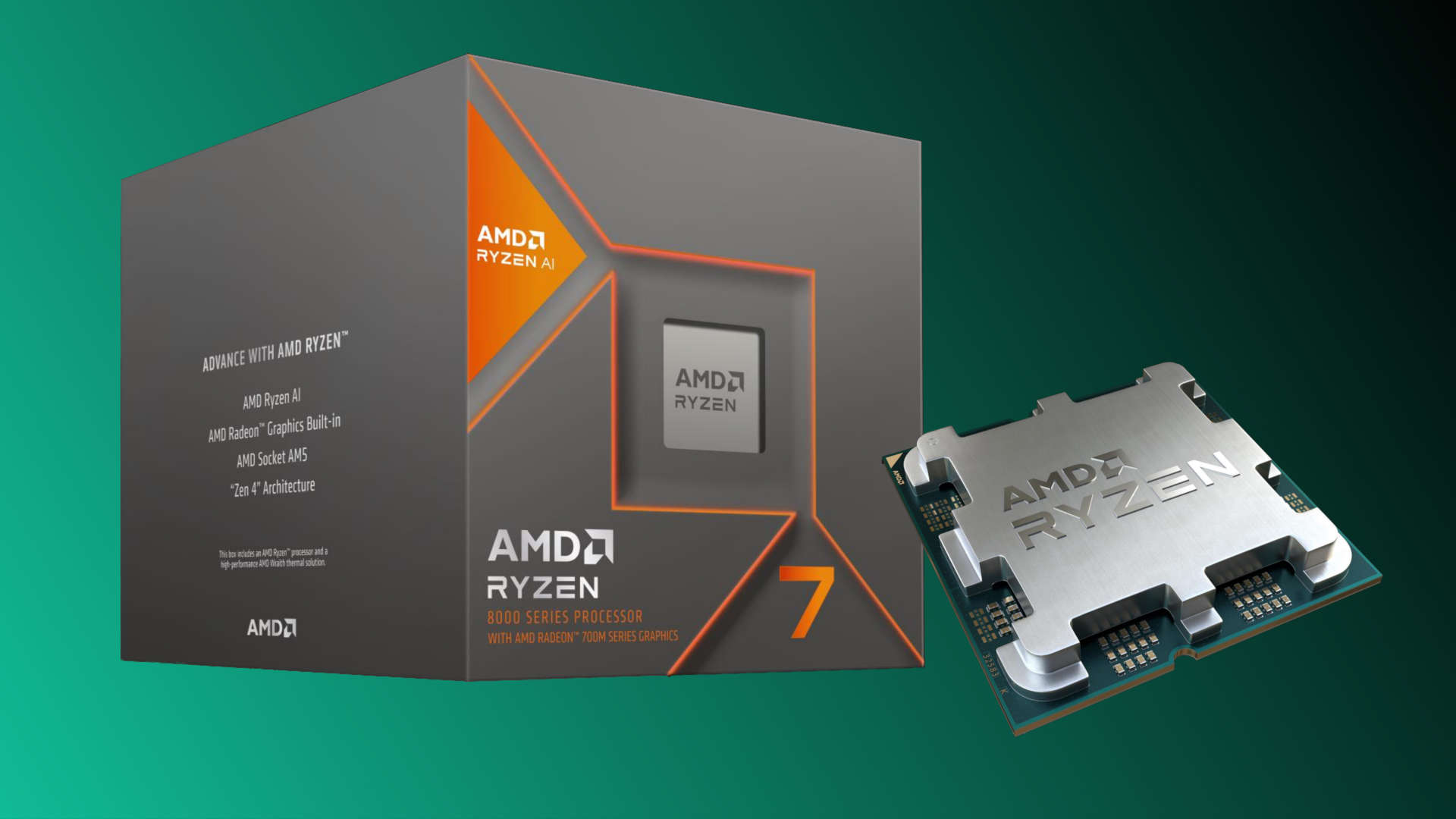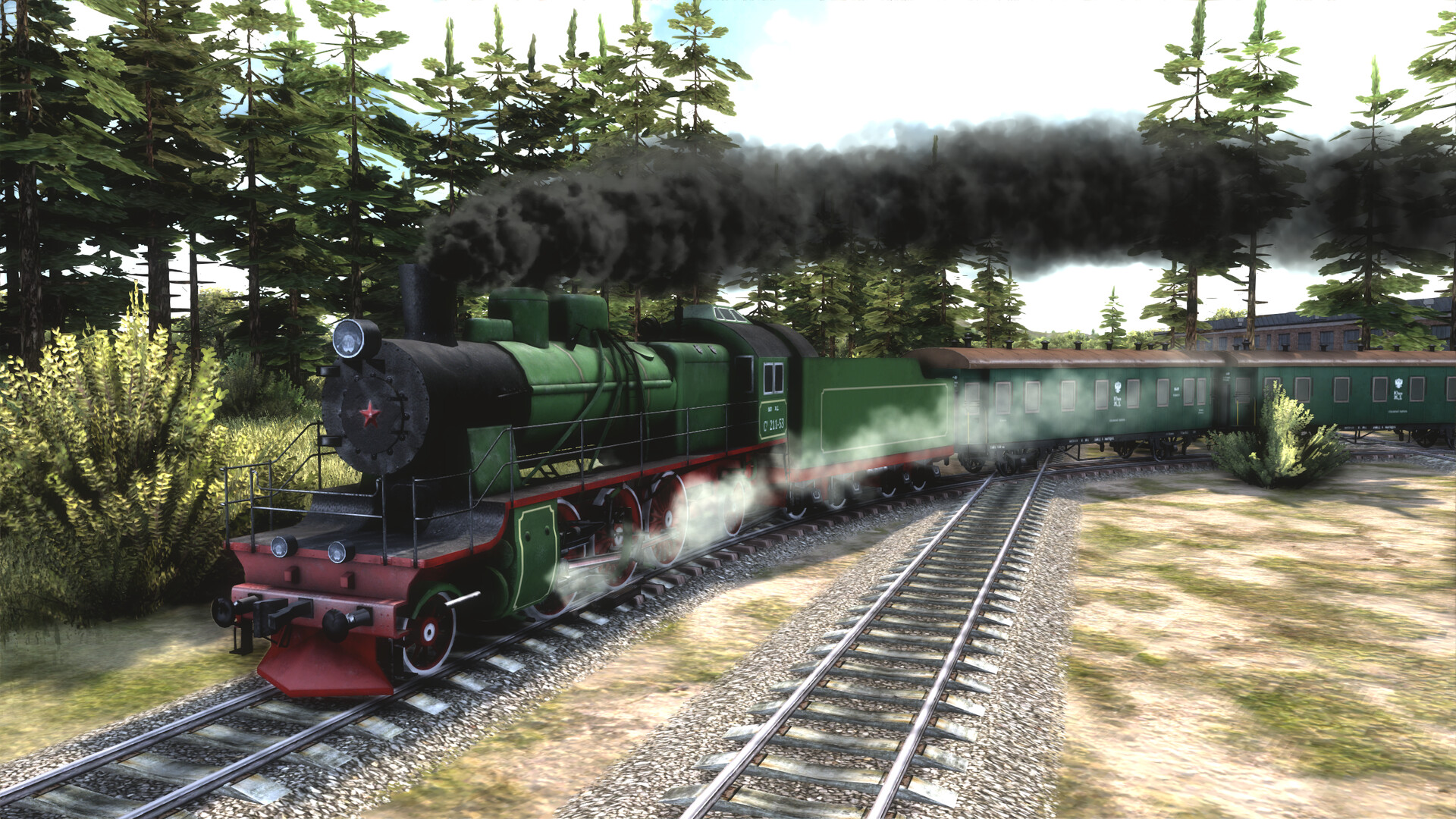It’s been nearly three years since AMD launched its last desktop APU series, but now the all-in-one CPU+budget GPU chips are back with a bang in the form of the 8000G series. The new range covers four models, all of them using the Zen 4 CPU and RDNA 3 GPU architectures. The best GPU is unfortunately only in the most expensive one, but for many gamers looking to build a compact PC this year, it may well be the perfect APU.
The line-up starts with the four-core, eight-thread Ryzen 3 8300G, with a 4.9GHz boost clock, 12MB of L2 and L3 cache, and a Radeon 740M GPU. That has a paltry 256 shaders so don’t expect much in the way of gaming chops. To put it into perspective, that’s half the number of shaders that are in the Steam Deck’s GPU.
There are two Ryzen 5 models: the 8500G and 8600G. Both have six cores and 12 threads, 22MB cache, 5.0GHz CPUs but they differ in terms of GPU. The former has the same Radeon 740M as the 8300G but the 8600G runs with the Radeon 760M. That has 512 shaders so it should be on par with the Steam Deck. It also boasts a Ryzen AI chip, a dedicated processor for handling machine learning calculations.
Topping the range is the Ryzen 7 8700G: eight cores, 16 threads, 24MB of cache, and a 5.1GHz boost clock. Handling graphics duties is a Radeon 780M, with 768 shaders. This is the same GPU that powers handheld PCs such as the OneXPlayer OneXFly and Ayaneo Air 1S. Like the 8600G, there’s a Ryzen AI chip for… well… AI stuff.
Interestingly, all four 8000G models have the same 65W TDP (thermal design power) limit. That figure makes sense for the 8700G but you’d be forgiven for thinking the 8300G and 8500G could get away with having lower values. Especially when you take into account that these two chips are physically different to the other two.
(Image credit: AMD)
While AMD hasn’t specifically said this, the new 8000G processors are repackaged Ryzen 7040U laptop chips, with the 8600G and 8700G being the original Phoenix design, and the 8500G and 8300G being the newer Phoenix 2. These don’t contain a Ryzen AI processor: It isn’t disabled, it’s physically not present.
And the CPU core layout is different, too. The top two 8000G APUs have Zen 4 CPU cores, but the bottom two use a Zen 4 + Zen 4c combination. In the case of the base Ryzen 3 8300G, there’s one Zen 4 core and three Zen 4c cores; the Ryzen 5 8500G has two Zen 4 and four Zen 4c cores.
Architecturally, there’s no difference between Zen 4 and 4c: It’s purely about how everything is arranged inside but packing things in to make the cores 35% smaller does have a cost, and it’s clock speed. Zen 4c isn’t designed to run as fast as the standard Zen 4, but AMD hasn’t said anything at all about whether the various cores have different clock speeds.
There’s hardly any difference between the 8000G models when it comes to the maximum boost clock, but the base clocks are notably disparate. The 8300G and 8500G have base clocks of 3.2 and 3.4GHz respectively, whereas the entirely Zen 4-based 8600G and 8700G are 4.3 and 4.2GHz (yes, that’s the correct way round). To me, the significantly lower base clocks in the bottom two models suggest that the Zen 4c cores won’t be hitting the indicated boost clocks, just the Zen 4 ones.
And to me, this is why the all-Zen 4 Ryzen 7 8700G is by far the best one in the new lineup. It has a vastly better GPU than the others and its CPU performance will be excellent. We know this simply from our tests of all the handheld PCs that use a Ryzen 7040U processor. It also explains why AMD specifically chose the 8700G for its comparison benchmarks.
(Image credit: AMD)
(Image credit: AMD)
(Image credit: AMD)
Pitching the new APU against an Intel Core i5-13400F and Nvidia GeForce GTX 1650 combination, the Ryzen 7 8700G is 1.1 times faster overall in AMD’s selected games and 2.1 times faster overall in a range of synthetic and productivity benchmarks. The latter isn’t surprising at all, given that the 13400F is a six P-core, four E-core chip, with a boost clock of 4.6GHz.
The gaming results are more interesting, though, as the GTX 1650 is roughly the same as the Radeon 780M in terms of shaders and other GPU components. It has more shaders but they’re of a much older design and clocked far lower than the Radeon 780M. The RDNA 3 GPU should be a lot better, thanks to its superior shading performance and cache levels.
As with all APUs, the Ryzen 8000G models use system memory for everything: The integrated GPU has no VRAM of its own. The GTX 1650 only has 4GB of VRAM, with 128GB/s of memory bandwidth, but AMD used 32GB of dual-channel DDR5-6400 for its testing, so that’s around 100GB/s of bandwidth. You could probably eke out more by playing around with timings, but Ryzen CPUs typically don’t play well with faster RAM.
This is something to bear in mind if you’re planning on building a new APU-based PC this year. If you want the best possible gaming performance, get the fastest, lowest latency DDR5 dual channel memory kit you can afford, and at least 16GB of the stuff.
Despite the limitation of having to use the system RAM for the GPU, AMD’s Ryzen 8000G series is a notable improvement on the previous 5000G range. Clock speeds are vastly improved, without an increase in power consumption, and the GPU is much better thanks to having more shaders; they’re also RDNA 3 ones, instead of the ancient Vega design.
(Image credit: Future)
Best CPU for gaming: The top chips from Intel and AMD.
Best gaming motherboard: The right boards.
Best graphics card: Your perfect pixel-pusher awaits.
Best SSD for gaming: Get into the game ahead of the rest.
You’re also getting PCIe 5.0 support so drop any of the 8000G chips into an AM5 X670E or B650E motherboard, and you’ll have a future-proof platform when it comes to installing a blazing fast PCIe 5.0 SSD. As to whether you’ll want to go down an APU route, well that probably all comes down to the price tag.
Starting with the Ryzen 7 8700G, AMD has set the SEP/MSRP at $329, and the two Ryzen 5 models at $229 and $179 for the 8600G and 8500G, respectively. There’s no indicated price for the 8300G because that’s exclusive to OEM suppliers.
The price for the 8700G puts it roughly the same as the Ryzen 7 7700. While both models sport the same number of cores and similar clock speeds, the latter does have more L3 cache. However, its integrated GPU is useless at gaming, whereas the 8700G’s clearly isn’t.
Personally, I think AMD has judged the prices just about right. The Ryzen 5000G series were great APUs and, on paper at least, the new 8000G range is a worthy successor. I can’t wait to see one in the office to see just what the little chip can achieve.
_____________________________________
PC Gamer’s CES 2024 coverage is being published in association with Asus Republic of Gamers.











